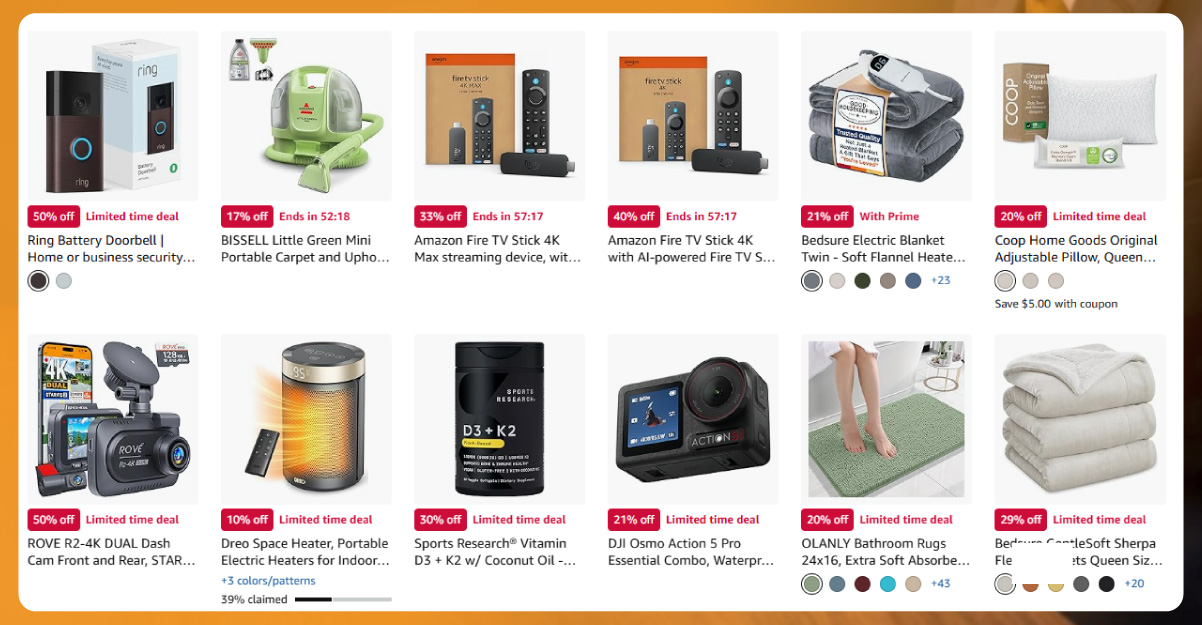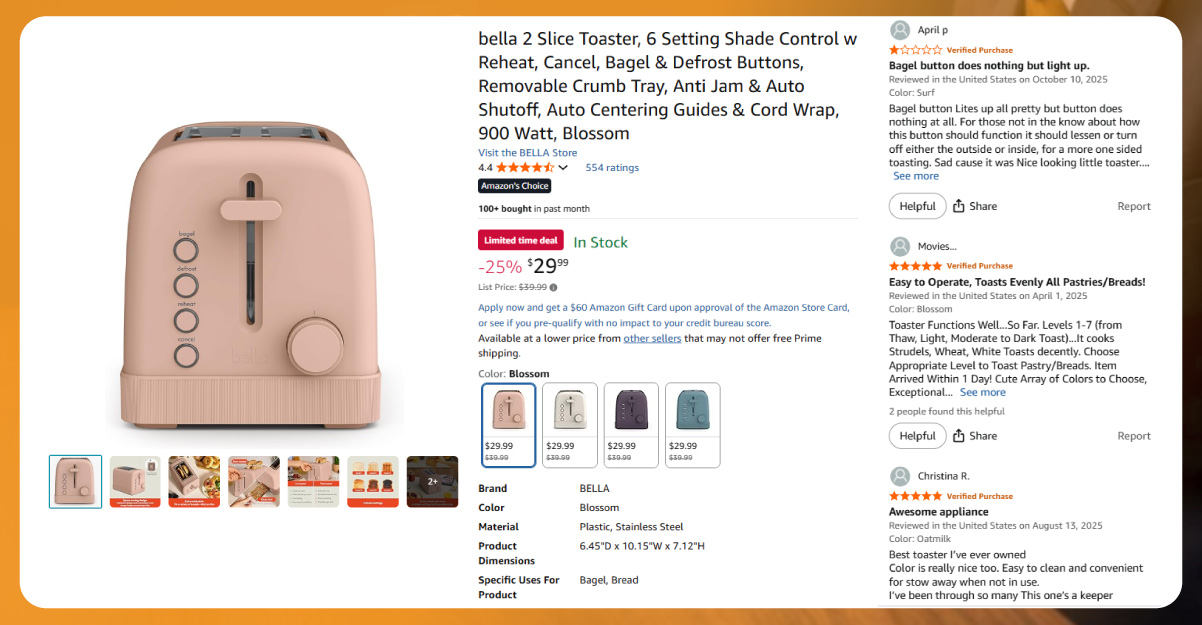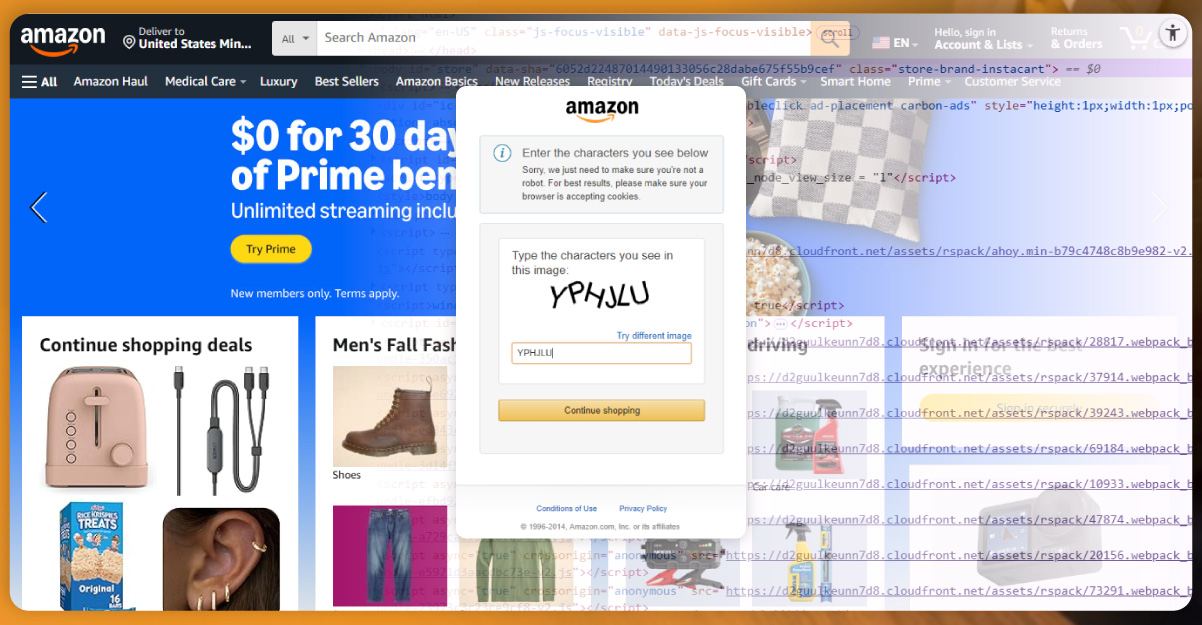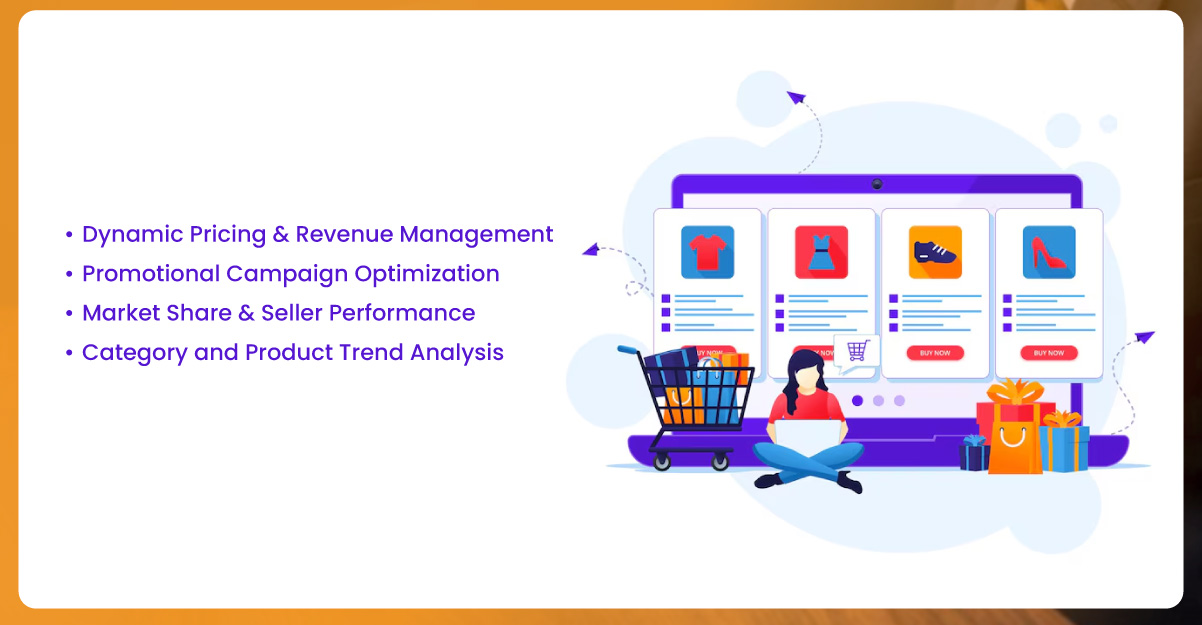
In today’s fast-paced e-commerce landscape, Amazon is more than a marketplace—it’s a dynamic ecosystem where pricing, promotions, and seller behavior change in real time. For brands, retailers, and analysts, the ability to gather actionable insights is critical. This is where Web Scraping Amazon Price, Coupon & Seller Data becomes invaluable. By leveraging advanced data extraction methods, businesses can Track Amazon Product Trends in 2025 to make informed pricing, inventory, and marketing decisions. Simultaneously, Amazon seller data scraping empowers companies to monitor competitors, identify high-performing sellers, and detect unauthorized listings.
With millions of products across thousands of categories, the opportunity to track, analyze, and respond to market signals is immense. By extracting historical pricing, coupon information, and seller trends, businesses can optimize their strategy and maintain a competitive edge in an increasingly volatile marketplace.

Price Intelligence and Dynamic Competition
Amazon’s pricing algorithms constantly fluctuate based on demand, competition, and inventory. Amazon price tracker tools allow brands to monitor these changes and respond with dynamic pricing strategies. Without this insight, businesses risk losing sales or eroding margins due to outdated pricing. Real-time data enables smarter decisions, whether it’s adjusting product prices to match competitors or identifying profitable arbitrage opportunities.
Coupons and Promotional Analysis
Coupons, deals, and lightning offers play a crucial role in consumer buying behavior. By performing Amazon coupon and discount data extraction, brands can track which SKUs are promoted heavily, identify high-performing promotional strategies, and optimize their own marketing campaigns. This data helps retailers understand seasonal spikes, trend-driven discounts, and the impact of promotions on conversion rates.
Seller Insights and Marketplace Monitoring
Not all sellers operate equally. By performing Extract Amazon seller trends analytics, brands can monitor which sellers dominate certain categories, track new entrants, and detect unauthorized or grey-market listings. Understanding seller dynamics allows businesses to protect brand value and enforce pricing compliance, particularly in regulated categories or when working with MAP (Minimum Advertised Price) policies.
Category-Level Intelligence
Tracking patterns across categories is essential for portfolio-level strategy. By monitoring data, companies can scrape Amazon price and coupon data by category to identify trends, rising product categories, and shifting consumer preferences. This knowledge drives strategic decision-making in marketing, inventory planning, and competitive positioning.

A successful Amazon data scraping initiative targets multiple layers of information. These include:
Collecting these metrics creates a comprehensive dataset that allows for pricing optimization, competitive analysis, and market forecasting. Companies can also Scrape Amazon pricing intelligence data to identify price anomalies and opportunities for margin improvements.
There are several ways to collect Amazon pricing, coupon, and seller data. The approach depends on scale, frequency, and technical sophistication.
HTML Parsing & Static Scraping
The simplest approach uses HTTP requests to retrieve product pages and parse HTML content. Libraries like BeautifulSoup, lxml, or Scrapy allow extraction of product prices, coupons, and seller information.
Pros: Lightweight, direct, and highly customizable.
Cons: Fragile against HTML structure changes and limited for dynamic content.
Headless Browsers & JavaScript Rendering
Amazon often loads content dynamically, particularly for coupon labels and seller information. Headless browsers such as Selenium or Playwright simulate real users, rendering JavaScript-heavy pages.
Pros: Accurate extraction from dynamic pages.
Cons: Resource-intensive and slower than static parsing.

For larger-scale operations, leveraging an Amazon data scraping Service or third-party API provides structured, reliable, and up-to-date datasets. APIs often include proxy management, CAPTCHA bypass, and pre-processed JSON output.
This approach is ideal for enterprises looking to extract Amazon data for price optimization or integrate into BI dashboards.
Boost your sales and stay ahead of the competition—harness the power of our e-commerce data scraping services today!
Anti-Bot Measures
Amazon actively detects scraping activity. Using rotating proxies, randomized request intervals, and user-agent rotation helps avoid detection.
Dynamic Layouts
Amazon frequently changes its HTML structure. Scrapers must adapt by using flexible selectors, fallback parsing, and automated monitoring of extraction accuracy.
Regional & Device-Specific Pricing
Amazon displays different prices based on location and device type. Scrapers must simulate appropriate geolocations and user devices to ensure accurate data collection.
Legal Considerations
Always adhere to local laws and Amazon’s Terms of Service. Scraping should focus on publicly available information and avoid personal or private data.

Dynamic Pricing & Revenue Management
By leveraging Amazon Product price scraping, businesses can respond quickly to competitor pricing, optimize revenue, and avoid margin erosion. Historical data analysis enables predictive pricing strategies and automated repricing systems.
Promotional Campaign Optimization
Coupons and discounts can be analyzed to understand their impact on sales velocity. Extracting Amazon coupon and discount data extraction allows marketers to plan promotions based on competitor behavior, seasonal trends, and category-level insights.
Market Share & Seller Performance
Monitoring sellers helps brands identify unauthorized listings, track fulfillment patterns, and benchmark seller performance. Amazon seller data scraping provides insights into how different sellers affect pricing, availability, and brand perception.
Category and Product Trend Analysis
Using tools to track Amazon price changes across product categories, brands can detect emerging products, seasonal demand shifts, and category-level promotions. This is especially useful for inventory forecasting and product portfolio management.
Collected data should be stored in a structured format for trend analysis and reporting. Common practices include:
Using advanced analytics, companies can build models to predict price movements, forecast demand, and identify high-impact promotional opportunities.

Tracking these metrics allows brands to fine-tune pricing, improve promotional ROI, and maintain competitiveness.
By following these practices, businesses can maintain a robust, scalable Amazon scraping strategy that adapts to evolving marketplace conditions.

Companies that adopt these trends will be better positioned to capitalize on competitive insights and improve operational efficiency.
Amazon continues to be one of the most dynamic e-commerce marketplaces, with prices, promotions, and sellers constantly evolving. By employing tools to Extract Amzon Product Data API solutions, companies can gain actionable insights, improve pricing strategies, and maintain market competitiveness.
Tools that Scrape Amazon Category Rank Data allow businesses to monitor trends, optimize offers, and protect brand integrity. Combined with robust analytics pipelines, these scraping practices empower data-driven decision-making that drives growth in a highly competitive digital marketplace.
Whether your goal is real-time Amazon Product Price Monitoring, tracking competitor discounts, or monitoring seller activity, investing in a scalable, automated, and legally compliant Amazon data scraping system is essential for 2025 and beyond.
Experience top-notch web scraping service and mobile app scraping solutions with iWeb Data Scraping. Our skilled team excels in extracting various data sets, including retail store locations and beyond. Connect with us today to learn how our customized services can address your unique project needs, delivering the highest efficiency and dependability for all your data requirements.